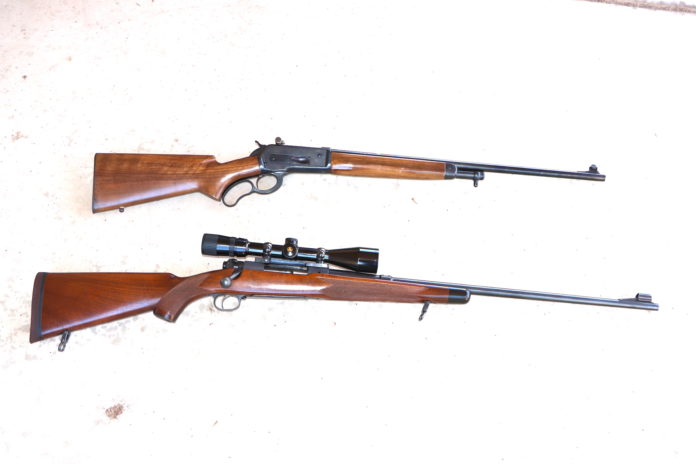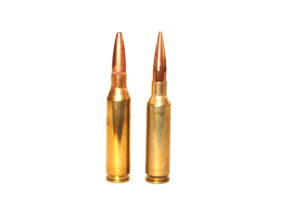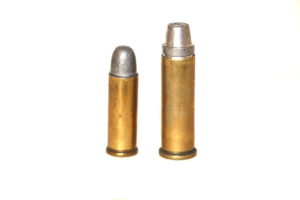
BY STEVE COMUS
The COVID-19 pandemic has thrown a monkey wrench into what the typically fickle marketplace wants when it comes to both guns and ammo.
This phenomenon, however, truly is nothing more than just another data point in the ongoing saga of guns and ammo. It is just another example of how timing affects sales — for better or for worse.
When it comes to rifle and cartridge popularity, timing is and almost always has been THE determining factor. It has been that way since the beginning of self-contained cartridges, continues now and most likely into the future.
The most recent example that is well known throughout Gundom is the 6.5mm Creedmoor centerfire rifle cartridge that began life as a target round, but quickly was adopted by hunters. Rarely has there been such an enthusiastic reaction among both target shooters and hunters.
While observers continue to argue exactly what factors were most important in the unprecedented jump to stardom for the 6.5 Creedmoor, it is safe to suggest that absent fortuitous timing, the cartridge would not have been known much beyond the target shooting crowd.

Of course, magnificent marketing by Hornady, the designer of the cartridge, it wouldn’t have had the splash it has enjoyed, but all the marketing in the world can’t make a dud a star. First, the cartridge must work, and the 6.5 Creedmoor certainly does that.
But performance alone doesn’t win the day. Witness the .260 Remington, which, like the 6.5 Creedmoor, also began life as a target cartridge. By most measures, the .260 has a very slight potential, if not real, performance edge over the 6.5 Creedmoor.
The difference is that the Creedmoor came along concurrently with the evolution in high-tech, heavy-for-bore long-range bullets, which, in turn sparked an unprecedented popularity in longer range shooting and hunting.
Put simply, the Creedmoor was designed specifically to take advantage of these longer, higher-tech bullets than was the .260 Remington, which came along before the advent of the highest performance bullets that are now quite common.
For hunting, there is no advantage for either of those cartridges over the other, yet the .260 is relatively obscure while the Creedmoor still shines in the spotlight. It all boils down to the mindset of the market.
A similar sea change in mindset happened in 1962 when Remington introduced the 7mm Rem. Mag. along with the Model 700 bolt-action rifle and, a year later, Winchester answered with the .300 Win. Mag. that fit nicely in their Model 70, as well as in surplus Mauser actions.
The 7mm Rem. Mag. was an overnight success based on the premise that it could take deer and elk at maximum range, yet not have jarring recoil. The proof in the pudding at the time, so to speak, was that the 7mm Rem. Mag. was touted as a long-range elk hunting cartridge.
Before then, serious elk hunters tended to use the .300 and .375 H&H Mags for longer range elk work, with the .30-06 Springfield holding down the shorter-range spot.
It took decades for the .300 Win. Mag. to catch and then overtake the 7mm Rem. Mag. in popularity. The reason was the perception that the .300 Win. Mag. had too much recoil, even though it outperformed the 7mm Rem. Mag. at all distances.
Perception dictated success and failure in the mid 1950s, as well, with the shootout between the .243 Winchester and 6mm Remington. The Winchester won because quickly it established itself as a better cartridge for hunting deer size game animals.
Remington read the tea leaves wrong at the time and paid the price for that miscalculation. Remington figured the .24-caliber offering was mostly a varmint cartridge and rifled ri- fles that stabilized lighter bullets well, but not heavier bullets.
Winchester rifled barrels that would stabilize the heavier bullets, which made it a better bet for deer. Although Remington tried to remedy the situation later, that race was over before it started.
And it is not just cartridges that are subject to the whims of the marketplace. So are rifles. Winchester proved that in the 1930s with the introduction of the Model 71 lever-action rifle in 1935 and the introduction of the Model 70 bolt-action rifle in 1936.
At that time, it was not totally clear which big game hunting rifle configuration would win the popularity contest
Winchester’s two mainline hunting rifles in that category until then were the Model 54 bolt-action and the Model 1886 lever-action. (The smaller Models 92 and 94 lever-actions were selling well for deer-size game and smaller, but for the bigger stuff, the 87 ruled the roost and Winchester’s Model 54 bolt-action rifle that was introduced in 1925 was coming on strongly, having been chambered for the .30-06 Springfield and .270 Winchester, among others.)
Winchester “improved” the big lever gun, dropping the 86 while introducing the 71. Similarly, Winchester “improved” the bolt-action, dropping the 54 while introducing the 70.
The 70 became known as “the rifleman’s rifle” while the 71 faded into obscurity, only to be dropped itself in 1958, a year after the Model 1897 pump shotgun was discontinued in 1957 — both based on 19th Century designs.
Never in the history of Gundom, however, has there ever been a more dramatic example of the whims of the marketplace than has been seen relative to the AR platform.
In recent times, it has become, for very many shooters, what a rifle looks like. There have been semi-auto rifles for over a century, but never has the broader market embraced any of them more enthusiastically than it has the AR in the past two or three decades. And that trend continues.
That trend now is spilling over into the bolt-action arena where most of the high-performance long-range rifles have a definite “AR” look. That’s because both the AR and the new breed of long-range bolt-action rifles are modular expressions of computerized manufacturing.
Ironically, the COVID pandemic has confused both gun and ammo trends in the marketplace, especially when it comes to new cartridges and guns to shoot them. Shortages of both guns and ammo because of the pandemic, combined with social unrest have stunted the market perform- ance of any of the new offerings during this period.
Specifically, the PRC (Precision Rifle Cartridge) variants were just coming on when the shortages hit. Predictably at least a couple or so of them will do fine when things get back to “normal.”
The .277 SIG Fury cartridge remains elusive on the market even though SIG-Sauer intended to market it to hunters in addition to the military. Whether this one makes it when normal times return remains in doubt, however, for several reasons, not the least of which is cost of ammo and operating pressures that are far above anything on the market before.

Yet there are other cartridges that ruled the roost for decades, fell onto hard times and then made a comeback. Among them is the .38 S&W Special, which was introduced in 1898 and was a standard issue law enforcement round into the 1980s. Its popularity dipped but has rebounded with the expansion of concealed carry around the land.
Consider that the .32 S&W Long, also a common law enforcement cartridge for decades, was introduced in1896 and has been relatively obscure since the 1940s and 1950s.
Or, what about the .44/40 (/44 WCF)? Introduced in 1873, it was considered obsolete by the end of WWII but was revived because of Cowboy Action Shooting, which was introduced in Southern California in the 1980s and continues to be popular today.
Timing may not be everything when it comes to which guns and ammo make it and which don’t, but timing is way ahead of whatever is in second place.
Steve Comus is a nationally recognized hunting editor with Safari Club International and a WON Guns and Hunting Guns Editor. His column generally appears every other week in WON and he can be reached at scomus@cox.net.



